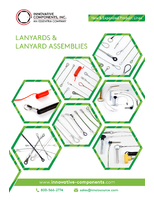Standards cover makeup mirror lighting and first aid kits.
Press Release Summary:
Published by PLASA, ANSI E1.552015 helps performers and makeup artists by describing topology of makeup mirror lighting systems, illumination levels produced on performer’s face, quantity of light, maximum luminance, brightness, color rendering, and CCT of lighting for makeup mirrors. Released by International Safety Equipment Association, ANSI/ISEA Z308.12015 establishes performance requirements for first aid kits and their supplies intended for use in various work environments.
Original Press Release:
Voluntary Standards Cover the Spectrum: from Makeup Mirror Lighting to Workplace First Aid Kits
In an effort to communicate the vital role that standards play in daily life, the American National Standards Institute (ANSI) publishes snapshots of the diverse standards initiatives undertaken in the global and national standards arena, many of which are performed by ANSI members and ANSI-accredited standards developers.
Two of the latest selections follow:
Makeup Mirror Lighting
Traditionally, incandescent light bulbs provided the uniform illumination needed for theatrical makeup artist and performers to apply makeup at the mirror stations in their dressing rooms. Effective makeup mirror lighting systems are essential to achieving a look that will appear the same in the dressing room as it will under the stage lights. However, the development of nonincandescent light bulbs has increased the number of possible variables in makeup mirror lighting systems.
To ensure theatres and other performance venue dressing rooms provide performers and makeup artist with sufficient, uniform lighting, a new American National Standard (ANS) has been published by PLASA. ANSI E1.552015, Standard for Theatrical Makeup Mirror Lighting, describes the topology of the makeup mirror lighting system, the illumination levels produced on the performer’s face, the quantity of light, the distribution of light from those sources, apparent source size, maximum luminance, brightness, color rendering, and correlated color temperature of lighting for makeup mirrors, with the goal of helping performers and makeup artists apply makeup quickly and accurately.
PLASA, an ANS-accredited standards developer and organizational member, is an international membership body for those who supply technologies and services to the event, entertainment, and installation industries. PLASA seeks to develop safe and sustainable standards that promote compatibility among equipment, products, and systems of competing manufacturers for the live entertainment equipment industry.
Workplace First Aid Kits
According to the U.S. Occupational Safety & Health Administration (OSHA), approximately three million nonfatal workplace injuries and illnesses are reported by private industry employers each year. As such, OSHA requires adequate first aid supplies be readily available to treat minor injuries that occur in the workplace. In order for employers to fulfill OSHA first aid kit requirements, a recently revised ANS has been released by the International Safety Equipment Association (ISEA) providing minimum specifications for the contents and performance of first aid kits.
ANSI/ISEA Z308.12015, Minimum Requirements for Workplace First Aid Kits and Supplies, establishes performance requirements for first aid kits and their supplies that are intended for use in various work environments. Designating the assortment of items and quantity of each item is based on the anticipated number of users intended to be served by each first aid kit, as well as the complexity of the work environment and level of hazards. First aid kit containers are classified by portability, ability to be mounted, resistance to water and corrosion, and impact resistance. ANSI/ISEA Z308.12015 is intended to be used in conjunction with ANSI/ISEA Z358.1, Emergency Eyewash and Shower Equipment.
ISEA, an ANSI-accredited standards developer and organizational member, is non-profit organization dedicated to personal protective equipment and technologies – equipment and systems that enable people to do work in hazardous environments. Its member companies are world leaders in the design, manufacture, testing and application of protective clothing and equipment used in factories, construction sites, hospitals and clinics, farms, schools, laboratories, emergency response, and in the home.




